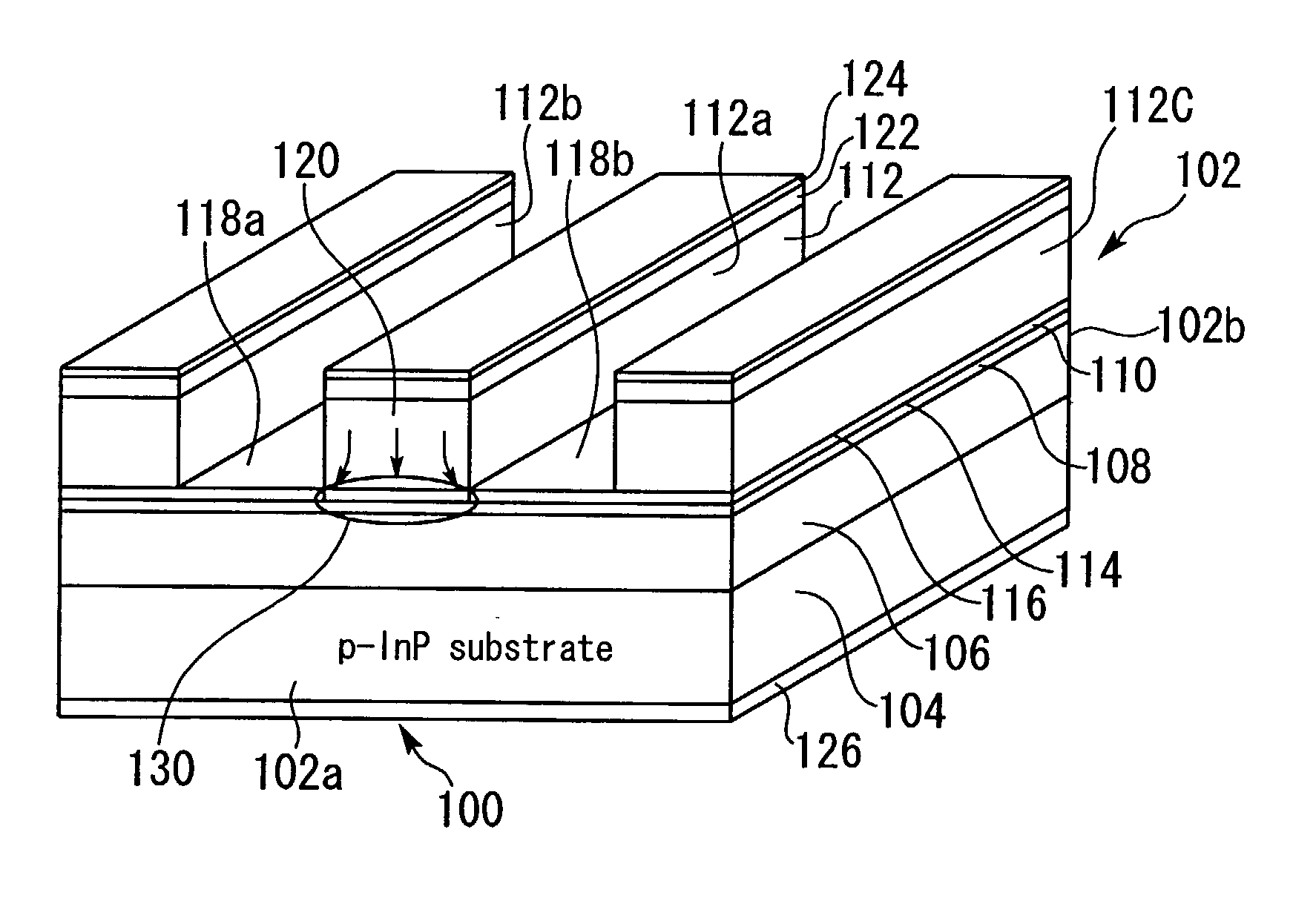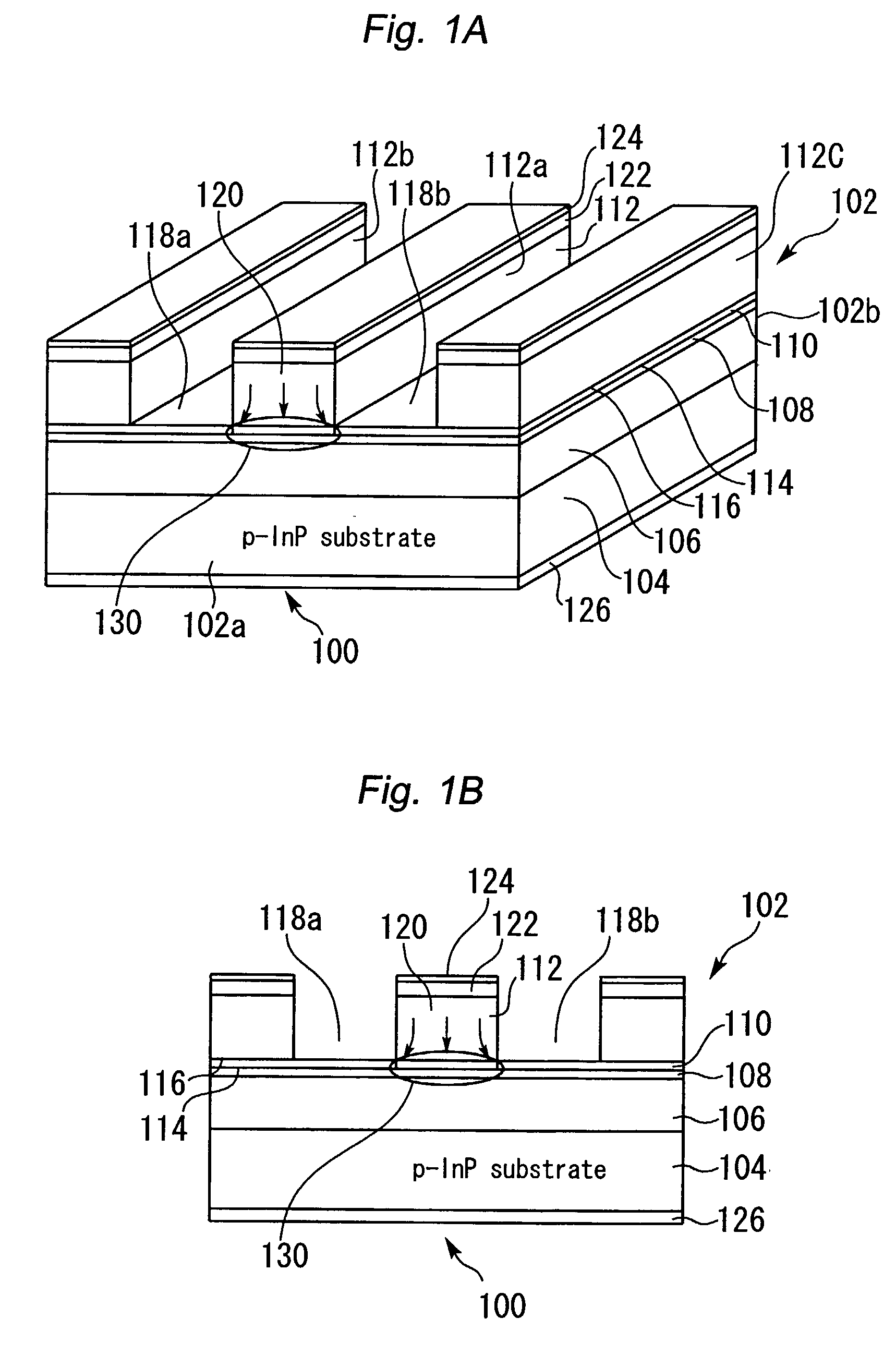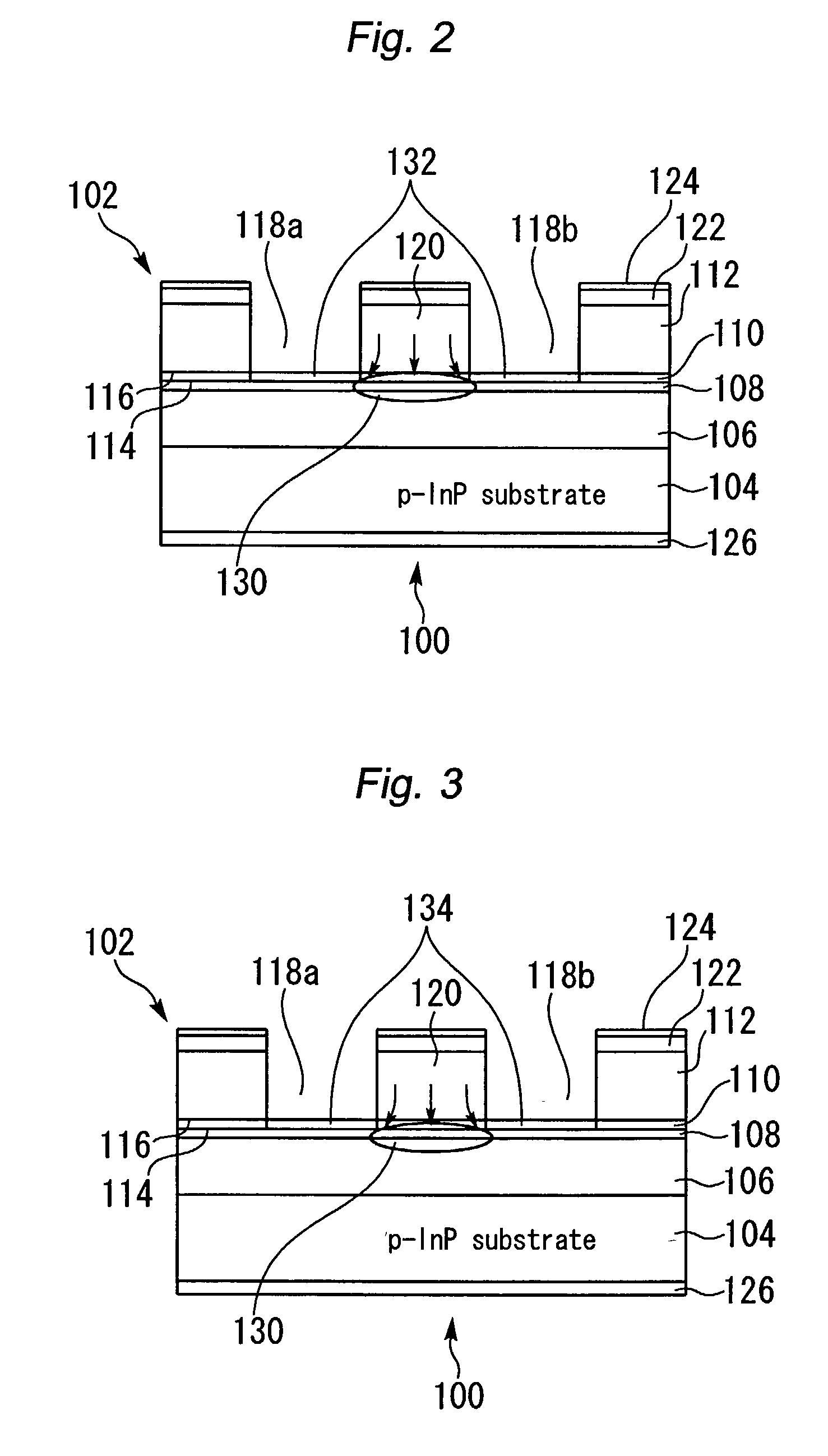Ridge-waveguide semiconductor laser device
a laser device and semiconductor technology, applied in lasers, laser optical resonator construction, laser details, etc., can solve the problems of increasing the oscillation threshold current, operating speed characteristics, and not improving the temperature characteristics sufficiently
- Summary
- Abstract
- Description
- Claims
- Application Information
AI Technical Summary
Benefits of technology
Problems solved by technology
Method used
Image
Examples
first embodiment
[0021] First Embodiment
[0022] FIGS. 1A and 1B are views showing a ridge-waveguide semiconductor laser device according to a first embodiment of the present invention. FIG. 1A is a perspective view thereof and FIG. 1B is a cross-sectional view thereof.
[0023] The first embodiment is a ridge-waveguide semiconductor laser device 100 that uses the p-type semiconductor substrate. The ridge-waveguide semiconductor laser device 100 has a double hetero-structure element 102. The double hetero-structure element 102 includes a pair of mutually opposing facets 102a, 102b, and is constructed using a p-type semiconductor substrate 104. The semiconductor substrate 104 is, for example, a square p-type InP substrate having a thickness of 250 to 350 .mu.m. On all over the upper surface of the semiconductor substrate 104, a p-type InP cladding layer 106 is deposited to a thickness of 1 to 2 .mu.m.
[0024] On all over the upper surface of the cladding layer 106, an active layer such as an AlGaInAs-based ...
second embodiment
[0037] Second Embodiment
[0038] FIG. 2 is a cross-sectional view showing the ridge-waveguide semiconductor laser device according to a second embodiment of the present invention. The laser device in the second embodiment has high-resistance regions 132 resulting from lattice defect in the portions exposed at the bottoms of the stripe-like trenches 118a and 118b of the first cladding layer 110. The device according to the second embodiment has almost the same structure as the device in the first embodiment except the above-mentioned point. Any part corresponding to a counterpart of the first embodiment is designated by the same reference number as the first embodiment.
[0039] The high-resistance regions 132 are formed by implanting ions of an inactive element such as H (hydrogen), He (helium) or Ar (argon) from the stripe-like trenches 118a, 118b toward the first cladding layer 110. In this ion implantation process, acceleration energy of ions is set to such a degree that neither impla...
third embodiment
[0041] Third Embodiment
[0042] FIG. 3 is a cross-sectional view showing a ridge-waveguide semiconductor laser device according to a third embodiment of the present invention. The laser device in the third embodiment has high-resistance regions resulting from introduction of F (fluorine) to the portions exposed at the bottoms of the stripe-like trenches 118a and 118b of the first cladding layer 110. The device according to the third embodiment has almost the same structure as the device in the first embodiment except the above-mentioned point. Any part corresponding to a counterpart of the first embodiment is designated by the same reference number as the first embodiment.
[0043] It is known that when F is introduced into the n-type AlInAs layer constituting the first cladding layer 110, F inactivates Si (silicon) element or S (sulfur) element, which is an n-type impurity, in the portion where F was introduced, and makes the portion highly resistive. In the third embodiment, high-resis...
PUM
 Login to View More
Login to View More Abstract
Description
Claims
Application Information
 Login to View More
Login to View More - R&D
- Intellectual Property
- Life Sciences
- Materials
- Tech Scout
- Unparalleled Data Quality
- Higher Quality Content
- 60% Fewer Hallucinations
Browse by: Latest US Patents, China's latest patents, Technical Efficacy Thesaurus, Application Domain, Technology Topic, Popular Technical Reports.
© 2025 PatSnap. All rights reserved.Legal|Privacy policy|Modern Slavery Act Transparency Statement|Sitemap|About US| Contact US: help@patsnap.com



